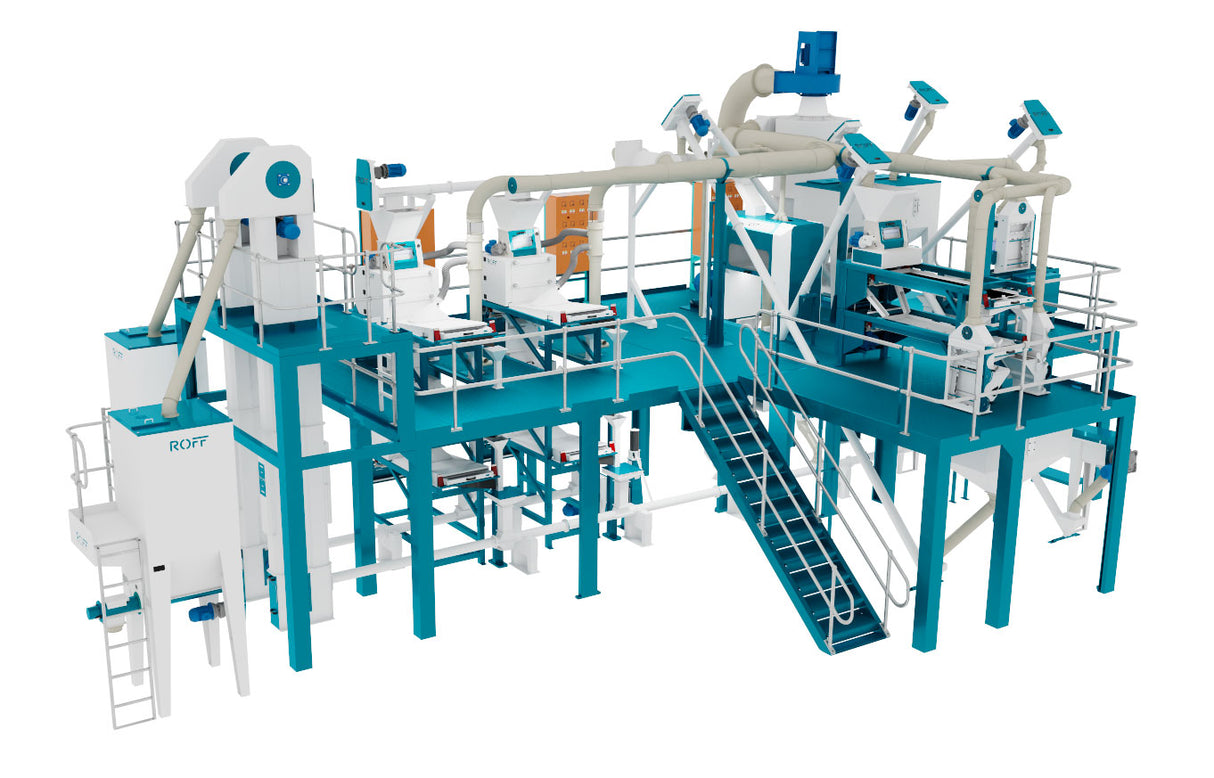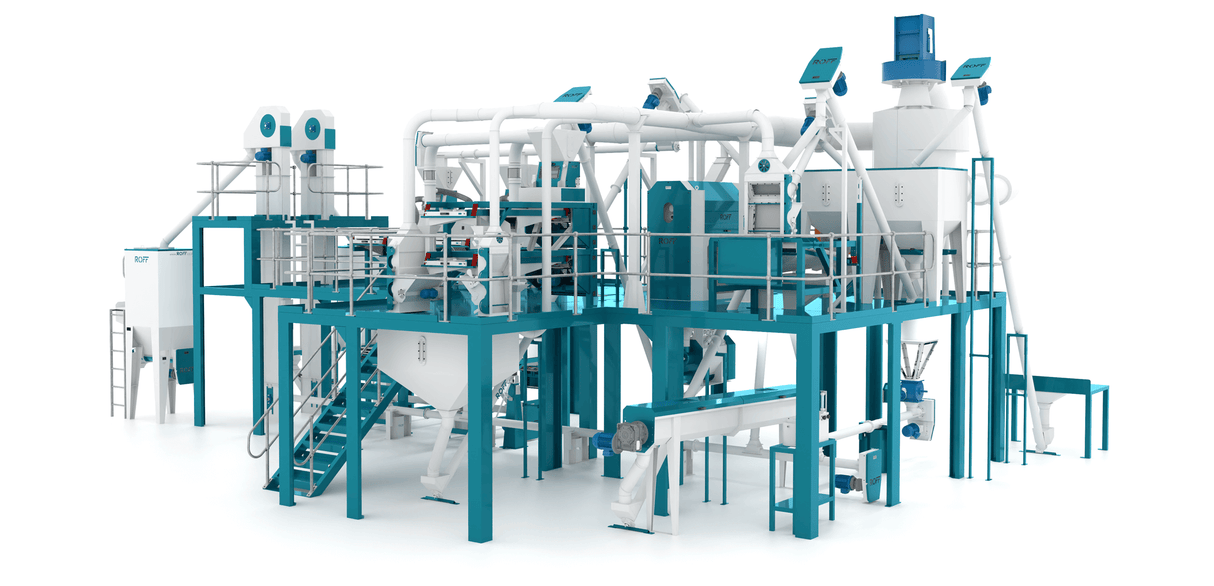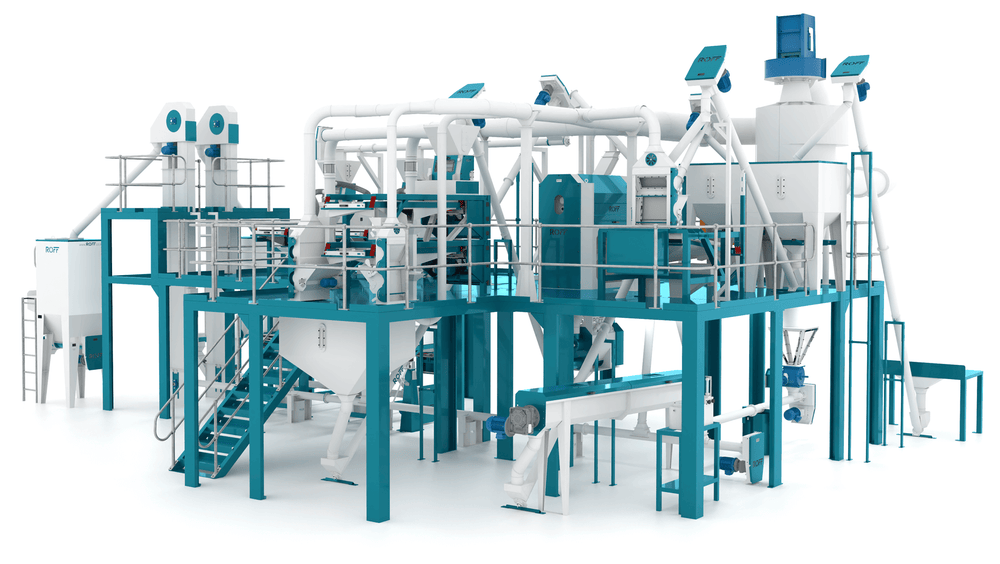DEGERMINATION, MILL BALANCE AND PRODUCT GRANULATION
In the second part of our series on maize kernel hardness and how it impacts the miller’s extraction rates, we look at degermination, mill balance and product granulation as factors that influence kernel hardness.
If you missed it, read part 1 of our series on how maize kernel hardness affects extraction rates here.

01. DEGERMINATION
Due to the action of the degerminator of removing the germ and the bran from the endosperm, maize with a soft endosperm will tend to break up more readily in the machine. Some good endosperm will also be dressed through the screen and will be lost to offal. The miller will have to set up the machine carefully to try and minimise maize being excessively broken up. The following would need to be checked:
- As mentioned previously, the water addition and lying time must be set to ensure the best possible separation of the bran/germ from the endosperm. This must be checked at regular intervals!
- Ensure that the discharge flap (tailgate) of the degerminator is set to avoid unnecessary breaking up of the endosperm. Some, if not all of the weights might have to be removed from the tailgate. The tension must provide just enough resistance to the maize in the machine to enable it to degerminate the maize without undue damage to the particles.
- Check the throughs of the degerminator screen to see whether there are not excessive amounts of good endosperm being lost to offal. On the Beall and other older types of machines, some of the endosperm particles in the throughs can be recovered on the Grader 2 plansifter and be sent to the Germ passages. However, due to the nature of their action, the recovery of endosperm from the throughs on the new generation machines is harder to achieve.
- Ensure that the degerminator parts are in good working condition. For example, worn nodules will not be able to detach the germ and bran from the endosperm and will produce a high proportion of finely ground germ meal which only makes the problem worse.
It’s perhaps easier to achieve a reasonable setting on the degerminator if all of the maize has a soft endosperm, as opposed to a mixture of hard and soft maize on the machine.
In the past, during severe droughts when maize had to be imported from Zimbabwe or the Argentines and other countries where soft maize is grown, millers had to make changes to their degerminators. These changes were made to limit the effect of excessive offal being produced and included:
- Reducing the speed of the machine.
- Reducing the aperture size of the screen.
- Removing some of the nodules on the rotor and stator of the machine.
The above helped to reduce the amount of fines produced on the degerminator.

02. MILL BALANCE
When good, hard endosperm maize is milled, the degerminator will produce good quality stocks which will be graded into various fractions on the Grader 1 plansifter for further milling.
Samp will have little or no germ or bran attached; the other separations from the plansifter which have some bran/germ attached will be sent to the 1st and 2nd Break roller mills. The throughs of the degerminator which would contain a small amount of fine endosperm, will be sent via the Grader 2 plansifter to the germ passages where these are recovered. This is the ideal situation in a well-balanced stock distribution on the mill, which would ensure that good quality products are made and that the desired extraction rate and product quality is achieved.
However, when maize with a soft endosperm is milled, the above is no longer achievable and a lot of good stock will be sent to the lower break and germ passages with a resultant loss in extraction. The degerminator will not be able to remove most of the bran and germ particles from the endosperm.
The miller will have his work cut out to try achieve the extraction rate and product quality. The germ percentage can, in extreme cases, be over 30%.
03. PRODUCT GRANULATION
In a well-balanced mill, the feed to the head reduction passages (R1 to R3) consists of good clean endosperm stock with very little germ/bran particles. Here the objective is to grind fairly hard in order to produce a good quality meal.
This will however not be the case if the maize has a soft endosperm. Care would have to be taken when setting up these rolls so as not to produce too much fine meal.
The tendency in most mills is to select the more granular meals to be sent to the Super Maize Meal bins and to put all of the softer meals into Special Maize Meal. This might solve the problem of maintaining an acceptable quality of Super, but the consumer will not be happy with the fines in the Special. Another option is to turn most of the soft, floury maize to make Maize Flour. However, there is a limited market for this product.
CONCLUSION
In order to achieve a reasonable extraction rate and an acceptable quality of finished product, the miller must know his mill and how to achieve the best results from it.









1 comment
I need a mini Maize milling machine that can do 150 to 200 kg per an hour specifically for rural area